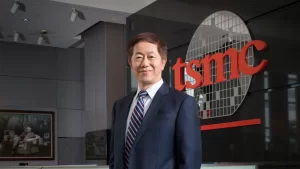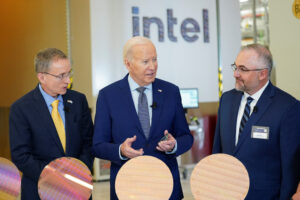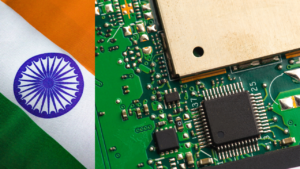In a statement released on the 3rd, Intel confirmed that its Programmable Solutions Group (PSG) is set to Spin-off starting January 1, 2024. This move aims to enhance their competitive edge in the FPGA (Field Programmable Gate Array) market. Moreover, Intel plans to take PSG public through an IPO within the next 2 to 3 years, potentially collaborating with private equity investors to expedite business growth. Intel, however, will maintain a majority stake in PSG even after the IPO.
Intel’s decision to transform its Altera unit into a standalone business and pursue an initial public offering (IPO) is driven by various strategic reasons, aimed at benefiting both Intel and Altera. Here are six compelling reasons for this strategic move.
“We’ve been largely homogenized inside of the Intel channel structure, particularly building up the distributors and VARs here. It’s another area of particular focus that we see as nicely accelerated by creating this clear operational separation under (PSG’s) leadership.”
~Pat Gelsinger, CEO, Intel
Follow us on Linkedin for everything around Semiconductors & AI
1.Unlocking Shareholder Value:
Transitioning Altera into a standalone business and subsequently conducting an IPO allows Intel to unlock significant shareholder value. By divesting a portion of Altera through the IPO, Intel can potentially realize a return on its initial investment, providing shareholders with an opportunity to capitalize on Altera’s growth potential and market value.
As a publicly traded company, Altera will be subject to stringent governance and reporting standards. This increased transparency and adherence to best practices in corporate governance can enhance credibility and trust among stakeholders, including customers, partners, and investors, further bolstering Altera’s market position and attracting long-term investments.
2. Focusing on Core Competencies:
Intel’s decision to separate Altera as an independent entity aligns with a strategy to streamline its focus and resources on core competencies.
Pat is strategically reorganizing to reverse operational losses. Investors positively reacted to PSG’s independence, boosting Intel’s stock price by over 2% in three days.
This action allows Intel to focus on core businesses like processors and semiconductor technology. It promotes innovation and strengthens competitiveness in these vital areas.
Read More: Intel to Start Mass EUV Production in Ireland; 2 Out of 5 nodes achieved
3. Enhancing Operational Agility of Altera & Intel:
Altera, as a standalone business, becomes more agile in decision-making and strategic planning, responding swiftly to market changes and customer needs. This agility, free from larger organizational bureaucracy, is crucial for seizing market opportunities and fostering innovation.
Sandra Rivera, now the CEO of PSG, will also lead Intel Data Center and AI Group (DCAI). PSG will function independently, reporting operational and financial updates to investors starting from Q1 of the 2024 financial report.
4. Growth of Altera Beyond Intel:
Altera’s IPO opens doors for new investors in the programmable chip market, distinct from chip manufacturing. This move also helps attract top talent through equity incentives, aligning employees with the company’s success and fostering innovation beyond Intel’s influence.
As an independent entity, Altera gains the flexibility to focus on key markets like artificial intelligence, edge computing, and IoT. It can optimize resource allocation, form strategic partnerships, and stay competitive in rapidly evolving technological landscapes.
5. The CEO Vision
Pat Gelsinger has divided Intel into six core businesses since he joined in February 2021:
- Client Computing Group (CCG): This group develops and sells microprocessors and other components for personal computers, laptops, and other consumer devices.
- Data Center and AI Group (DCAI): This group develops and sells microprocessors, accelerators, and other components for data centers and artificial intelligence applications.
- Network and Edge Group (NXG): This group develops and sells microprocessors, network interface controllers, and other components for networking and edge computing applications.
- Intel Foundry Services (IFS): This group provides semiconductor manufacturing services to other companies.
- Graphics Business (GB): This group develops and sells graphics processors for personal computers, laptops, and other consumer devices.
- Mobileye (ML): This group develops and sells self-driving car technology.
In addition to dividing Intel into these six core businesses, Gelsinger has also made a number of other changes, including:
- Investing heavily in research and development to develop new technologies and products.
- Reorganizing the company’s manufacturing operations to improve efficiency and reduce costs.
- Improving Intel’s customer relationships by working more closely with customers to understand their needs and develop products that meet those needs.
Gelsinger’s goal is to make Intel a more competitive and profitable company. By dividing Intel into six core businesses and making other changes, he is streamlining the company’s operations and focusing on its most important areas.
Stand Alone companies can perform in lean fashion enabling Intel to become a company for the next century.
Conclusion
IIn summary, Intel’s move to spin off Altera and seek an IPO is a strategic decision. It aims to unlock shareholder value and focus on core businesses. This decision enhances operational agility and attracts investments and talent. These factors collectively contribute to a more promising future for both Intel and Altera in their respective market segments.
References:
- https://finance.technews.tw/2023/10/04/intel-announces-intent-to-operate-programmable-solutions-group-as-standalone-business/








